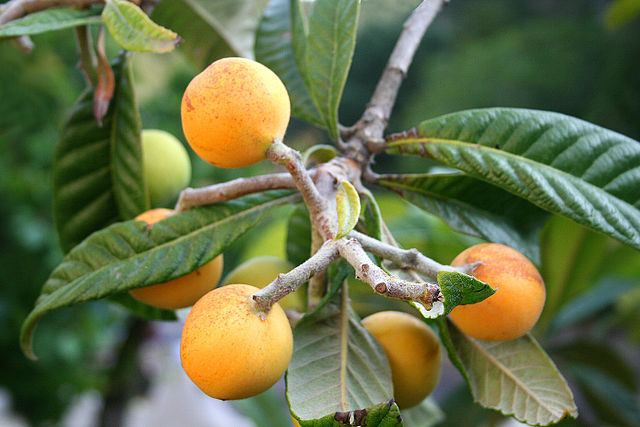Loquat
(Rhaphiolepis bibas)
Loquat (Rhaphiolepis bibas)
/
/

Jean-Pol GRANDMONT
CC BY 3.0
Image By:
Jean-Pol GRANDMONT
Recorded By:
Copyright:
CC BY 3.0
Copyright Notice:
Photo by: Jean-Pol GRANDMONT | License Type: CC BY 3.0 | License URL: https://creativecommons.org/licenses/by-sa/2.0 | Uploader: Jean-Pol GRANDMONT | Publisher: Wikimedia Commons |




Estimated Native Range
Summary
Rhaphiolepis bibas, commonly known as Loquat, is an evergreen tree native to the cooler hill regions of south-central China. The true Loquat is Eriobotrya japonica; Rhaphiolepis bibas is a separate species often confused with the Loquat due to similar fruit. Rhaphiolepis bibas, also known as Indian Hawthorn, typically grows to 5–10 meters (16–33 ft) tall, with a dense, rounded canopy. The leaves are leathery, dark green, and glossy, adding to its ornamental value. The tree is valued for its clusters of fragrant white flowers, which bloom in late winter to early spring, and for its small, dark blue to black berries that attract birds and wildlife.
The Indian Hawthorn is appreciated for its low maintenance, drought tolerance, and resistance to pests and diseases, making it a popular choice for urban landscaping, hedges, and foundation plantings. It thrives in a range of soil types, provided they are well-drained, and it can adapt to full sun or partial shade. While it is drought-tolerant once established, regular watering during dry periods will promote healthier growth. It is hardy in USDA zones 7 through 11.CC BY-SA 4.0
The Indian Hawthorn is appreciated for its low maintenance, drought tolerance, and resistance to pests and diseases, making it a popular choice for urban landscaping, hedges, and foundation plantings. It thrives in a range of soil types, provided they are well-drained, and it can adapt to full sun or partial shade. While it is drought-tolerant once established, regular watering during dry periods will promote healthier growth. It is hardy in USDA zones 7 through 11.CC BY-SA 4.0
Plant Description
- Plant Type: Shrub
- Height: 10-25 feet
- Width: 10-25 feet
- Growth Rate: Moderate
- Flower Color: White
- Flowering Season: Spring
- Leaf Retention: Evergreen
Growth Requirements
- Sun: Full Sun, Part Shade
- Water: Medium
- Drainage: Fast, Medium, Slow
Common Uses
Bee Garden, Bird Garden, Border Plant, Butterfly Garden, Deer Resistant, Drought Tolerant, Edible*Disclaimer: Easyscape's listed plant edibility is for informational use. Always verify the safety and proper identification of any plant before consumption., Fragrant, Hedges, Hummingbird Garden, Low Maintenance, Salt Tolerant, Showy Flowers
Natural Habitat
Cooler hill regions of south-central China
Other Names
Common Names: Japanese Medlar
Scientific Names: Rhaphiolepis bibas , Crataegus bibas , Eriobotrya japonica , Eriobotrya japonica f. variegata , Mespilus japonica , Photinia japonica , Photinia japonica , Photinia japonica , Photinia japonica , Pyrus bibas , Rhaphiolepis loquata
GBIF Accepted Name: